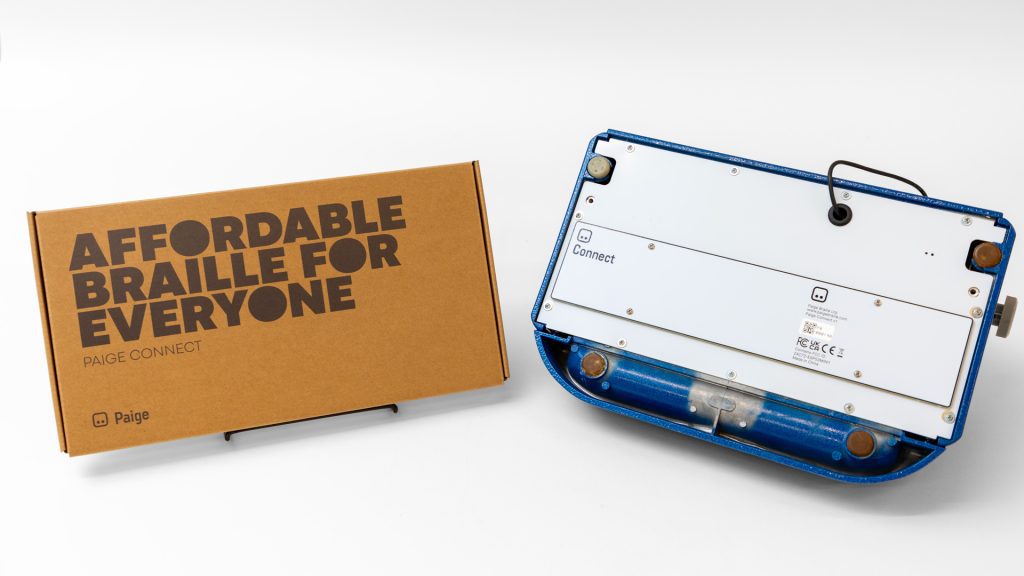To ensure your items arrive in time for the holidays, please place all orders using Free Matter shipping by Saturday, November 29 or by 12pm on Thursday, December 18 for UPS or USPS Priority shipping. School orders will be held after Monday, December 15 through the end of the year.
CloseThe Power of Partnerships: Developing eBraille Together

A worldwide file standard cannot be created alone. By utilizing the expertise of other organizations and individuals in the blindness field, APH constructed eBraille for all to use. Some of our partners include the DAISY Consortium, ViewPlus Technologies, Duxbury Systems, the National Federation of the Blind (NFB), the Braille Authority of North America (BANA), the Royal National Institute of Blind People (RNIB), HumanWare, Bookshare, and many others.
Everyone was united in their efforts to solve a problem: making a file standard compatible with one-line and multi-line braille displays, like the APH Monarch, that have braille and tactile graphics in one document. The result was eBraille. Coordinating a meeting time among different regions of the world was not easy, but each month, between 20-50 people from North America, Europe, and Asia attend these calls while others contributed through a GitHub project and the eBraille mailing list. As emails come in, “You can just read the things that come up and see what everybody’s saying or you can write in and contribute yourself,” said Willow Free, co-chair of the eBraille Working Group.
APH is so proud to be among such a talented group dedicated to improving accessibility with eBraille. We would like to recognize a handful of individuals for their contributions. Without them, eBraille would not be as successful as it is today. David Holladay worked for many years at Duxbury Systems and helped with the eBraille project until he passed away this year.
“He knew everything there was to know about international braille,” said Willow. “To have this person working on eBraille with us was pretty amazing.” Today, David’s wife, Caryn Navy, who also works for Duxbury, continues to assist with the project.
We would also like to thank four others who added their expertise to the group’s work. Jen Goulden, Chair of the BANA Board, supplied crucial guidance as eBraille was created.
“Charles LaPierre, Principal Accessibility and Content Quality Architect at Benetech which owns Bookshare, is one of our eBraille editors,” said Willow. “He’s given us great advice, provided technical information, and allowed us to bounce ideas off of him.” Christian Egli, works with Liblouis, regularly provides great feedback and ideas for eBraille.
“He knows a lot about braille and has a very keen mind for technical details,” said Willow. James Bowden, Braille Technical Officer at RNIB, also made invaluable contributions in meetings and on GitHub.
Today, the blindness field embraces technology and strives to move forward with more innovative adaptations for all.
“eBraille represents a new way of thinking about braille and thinking about braille files and the way they can be interactive and the way we can empower readers,” said Willow. “Everyone deserves to be able to read in the medium that they need or prefer.” All who partnered with APH on eBraille have proven their dedication to a better,more accessible tomorrow as this new standard improves students’ academic experiences. We are grateful and humbled to be one small part of this braille revolution.
To find out more about eBraille and how it is being used with the Monarch, read our other eBraille blogs.
Share this article.
Related articles

Barrier Breaking with Accessible Partnerships on Multiline Braille Displays
APH, HumanWare, Vispero, and the JAWS screen reader, are teaming up to break barriers with a new program for multi-line...

Bring New Life to Your Braille Writer with Paige Connect
An innovative way to turn your traditional braille writer into so much more, Paige Connect is a physical board with...

Commemorating Guide Dog Day with Guide Dogs for the Blind
International Guide Dog Day is celebrated each year to mark the establishment of the International Federation of Guide Dog Associations...
